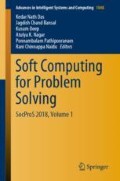Abstract
Magnetic Resonance Imaging (MRI) is a medical imaging technique used for analyzing and diagnosing diseases such as cancer or tumor in a brain. In order to analyze these diseases, physicians require good contrast scanned images obtained from MRI for better treatment purpose as it contains maximum information of the disease. MRI images are low-contrast images which lead to difficulty in diagnoses, hence better localization of image pixels is required. Histogram equalization techniques help to enhance the image so that it gives an improved visual quality and a well-defined problem. The contrast and brightness are enhanced in such a way that it does not lose its original information and the brightness is preserved. In this paper, we compared the different equalization techniques which are critically studied and elaborated. Various parameters are calculated and tabulated, finally concluded the best among them.
Access this chapter
Tax calculation will be finalised at checkout
Purchases are for personal use only
References
Gonzalez, R.C., Woods, R.E.: Digital Image Processing, 2nd edn. Prentice Hall (2002)
Kim, Y.T.: Contrast enhancement using brightness preserving bi-histogram equalization. IEEE Trans. Consum. Electr. 43(1), 1–8 (1997)
Abdullah-Al-Wadud, M., et al.: A dynamic histogram equalization for image contrast enhancement. IEEE Trans. Consum. Electr. 53(2), 593–600 (2007)
Chen, S.D., Ramli, A.R.: Minimum mean brightness error Bi-histogram equalization in contrast enhancement. IEEE Trans. Consum. Electr. 49(4), 1310–1319 (2003)
Patel, O., Maravi, Y.P.S., Sharma, S.: A comparative study of histogram equalization based image enhancement techniques for brightness preservation and contrast enhancement. Signal Image Process. Int. J. (SIPIJ) 4(5) (2013)
Senthilkumaran, N., Thimmiaraja, J.: A study on Histogram Equalization for MRI Brain Image Enhancement. Association of Computer Electronics and Electrical Engineers (2014). doi: 03.AETS.2014.5.348
Garg, R.: Histogram equalization techniques for image enhancement. IJECT 2 (2011)
Kaur, M.: Survey of contrast enhancement techniques based on Histogram equalization. Int. J. Adv. Comput. Sci. appl. 2 (2011)
Author information
Authors and Affiliations
Corresponding author
Editor information
Editors and Affiliations
Rights and permissions
Copyright information
© 2020 Springer Nature Singapore Pte Ltd.
About this paper
Cite this paper
Patel, S., Bharath, K.P., Balaji, S., Muthu, R.K. (2020). Comparative Study on Histogram Equalization Techniques for Medical Image Enhancement. In: Das, K., Bansal, J., Deep, K., Nagar, A., Pathipooranam, P., Naidu, R. (eds) Soft Computing for Problem Solving. Advances in Intelligent Systems and Computing, vol 1048. Springer, Singapore. https://doi.org/10.1007/978-981-15-0035-0_54
Download citation
DOI: https://doi.org/10.1007/978-981-15-0035-0_54
Published:
Publisher Name: Springer, Singapore
Print ISBN: 978-981-15-0034-3
Online ISBN: 978-981-15-0035-0
eBook Packages: Intelligent Technologies and RoboticsIntelligent Technologies and Robotics (R0)

